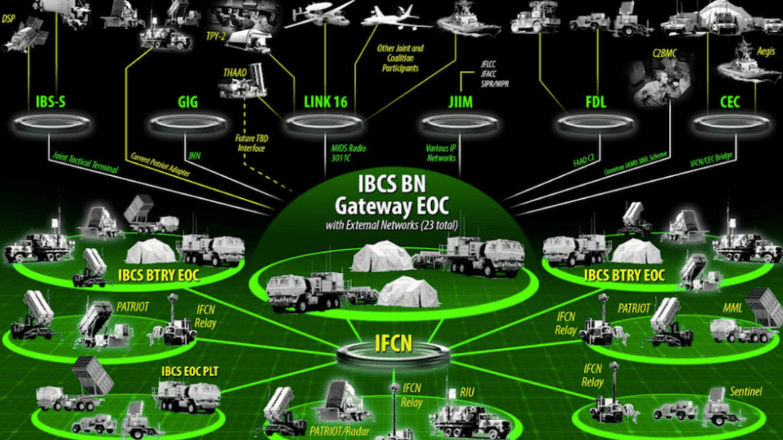Armed Forces
Gen. Baczewski: Poland’s Continued Leadership Needed to Protect Against Russian Aggression. Decisions on NAREW Will Have an Impact Far Beyond Poland [OPINION]

The defense of NATO’s eastern flank remains an extraordinarily complex challenge for the United States and its allies, as Russian aggression continues to the east - as Retired USAF Brig. Gen. Dave Baczewski, former Deputy Director of Operations United States European Command writes in an op-ed for Defence24.com.
Of particular concern is Kaliningrad, where Russia has deployed nuclear-capable Iskander missiles, which is only further exacerbated with the recent termination of the Intermediate Nuclear Forces Agreement. The world is also watching Ukraine, where Russia’s use of unmanned aerial vehicles (UAVs) for both reconnaissance and the real-time direction of long-range artillery and rocket attacks poses an imminent threat.
In addition, Russia continues to demonstrate the capability of over-the-horizon launched cruise missiles as well as the on-going development and testing of hypersonic platforms.
Poland, in particular, is keenly aware of the Russian air and missile threat and continues to exhibit a leadership role within NATO as to the requirements and capabilities required to defend against a Russian attack. Importantly, this is a battlespace in which every domain is contested – air, land, sea, space, and cyberspace.
In order to deter and/or defend against Russia in a multi-domain battlespace, the United States and its NATO allies must pursue a truly integrated air and missile defense system for Europe. This ultimately requires a complex “system of systems” and open systems architecture approach upon which the backbone is a command and control (C2) capability which enables integration across different domains to achieve effective multi-domain operations.
Such a capability would provide an adaptable and readily upgradable technology basis for both new and legacy systems, as well as support the development and integration of future capabilities. The application of an open architecture approach will enable rapid capability insertion, software commonality, interoperability, and integration.
A positive step towards adopting this approach is the fact that Poland has already acquired the Integrated Air and Missile Defense Battle Command System (IBCS). This new system has become the centerpiece of the U.S. Army Air and Missile Defense Modernization Program, as well as WISLA – Poland’s medium-range air and missile defense program.
In 2018, Poland officially committed to acquiring IBCS, becoming the first NATO country to do so. From early on, Polish defense leaders embraced IBCS’ unique capabilities for its envisioned air and missile defense modernization program for WISLA and now possibly NAREW, Poland’s short range air defense program. Then-Deputy Defense Minister Bartosz Kownacki stated bluntly, “you must know that IBCS is what everyone will buy. This is the future that awaits all of us…”
To their credit, the nation’s defense leadership has consistently recognized that making an open C2 system the centerpiece of its new air and missile defense enterprise assures not only interoperability with U.S. forces to protect Poland and NATO’s eastern flank, but the acquisition will ensure Poland has invested in the most modern force fully capable of multi-domain integration and battle.
With key decisions about the future of NAREW on the horizon, it is critical that Poland continue to consider a command-and-control system that is inherently designed to create an “integrated” fire control network with the participation and coordination of multiple distributed sensors and weapons – both current and future. This will ensure that Poland will be able to integrate the advanced capabilities of the F-35 Joint Strike Fighter, as well.
The ability of the F-35 to send data across IBCS has recently been proven. This capability is absolutely vital for multi-domain operations, as the F-35 has an extremely capable sensor that can detect threats that are very difficult for ground sensors alone to pick up. Its computers can then identify the threatening missile’s location and transmit tracking data through IBCS to be engaged by the “best shooter” available.
Today, the F-35 can track and destroy adversary cruise missiles, and, in the future, can possibly be equipped with a new or modified interceptor capable of shooting down adversary ballistic missiles in their boost phase. This is a future game-changer for air and missile defense which the United States, Poland, and its NATO allies can fully realize by embracing a command-and-control system with an open systems architecture approach.
Poland’s decision to acquire IBCS for WISLA and possibly NAREW, coupled with the future acquisition of the F-35 Joint Strike Fighter, make evident two assurances. First, Poland averts the outdated “stovepiped” systems approach and a potential future gap in command-and-control capability, as IBCS will bridge C2 across multi-domain operations. Second, Poland continues to display tremendous leadership in the advancement towards an integrated European air and missile defense system.
Given the very real Russian threat to the region, a sophisticated network of interdependent sensors, shooters, and command and control that utilizes an open systems architecture approach to enable a dynamic defense design is a must for Poland and its allies. Poland’s investment in this design takes full advantage of “any sensor, best shooter” with the requisite integration and capability to deter and/or prevent Russia from the effective employment of their technologically advanced air and missile assets.
No doubt, the US and Russia are watching.
Retired USAF Brig. Gen. Dave Baczewski is an independent leadership and defense consultant. A former F-16 Wing Commander and Operational Test Pilot with over 4,000 flight hours, he last served on active duty as Deputy Director of Operations United States European Command.
